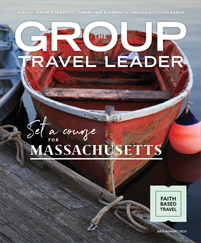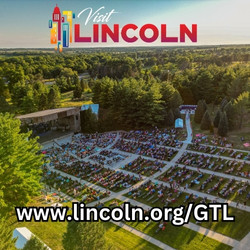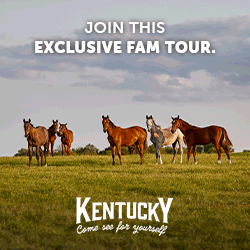A humanitarian boxer famous around the world, a jockey who should be famous, a bartender who chronicled what may be your favorite cocktail, generations of cave explorers and soldiers who volunteered to save the nation all played roles in Kentucky’s Black heritage.
You can learn their stories — and many others — in locations scattered around the state.
Louisville
Louisville is the site of multiple Black heritage attractions, and several are packed into a small portion of downtown. Within easy walking distance of each other are a tribute to the humanitarian boxer, a new museum housing one man’s extensive Black heritage artifact collection, a speakeasy to learn about the cocktail-mixing bartender and the bonus of a combination factory tour and museum.
The boxer, of course, is Muhammad Ali, whose career, impact and spirit generated the Muhammad Ali Center. Ali’s fame would be secure if he’d done nothing beyond winning an Olympic gold medal and multiple championship fights, but he was much more than that.
His “Red Bicycle Moment,” as explained early in the center, is eye-opening. At age 12, he reported the theft of his new bicycle to a police officer and said he wanted to “whup” the thief. By chance, or perhaps grace, the officer was a boxing coach who ultimately trained Ali (then Cassius Clay) for six years.
Consider all that would not have happened had the youngster not met that particular officer. No Olympic gold medal, no heavyweight championships, no resistance to war, no comfort for the afflicted in nations around the world.
Much of the rest of the Ali Center focuses on Ali’s core principles of confidence, conviction, dedication, giving, respect and spirituality.
Just a few blocks away is the Roots 101 African American Museum, a project of Louisville native Lamont Collins, whose goal is for you to understand the entirety of the Black experience in America and to see Blacks’ historical reality, talent, success and perseverance.
Compare Roots 101 to an introductory college course with potential for much deeper study. Artifacts spread through two levels highlight everything from Blacks’ African heritage and the horrors of slavery to Jim Crow, Motown, family life and the death of Breonna Taylor.
“We are descendants of kings and queens, not just slaves. Roots 101 is an open-heart story,” Collins said. “This is a healing place. If we treat the wounds, we get better.”
Nearby at the Evan Williams Experience, a lower-level speakeasy is the stage for actor George Harris to portray bartender Tom Bullock. Bullock, born in 1872 to a formerly enslaved man who fought in the Union Army, is famous in cocktail circles because he wrote “The Ideal Bartender,” the first cocktail book by a Black author.
Ask about Bullock’s role in an episode involving President Theodore Roosevelt. He was a notable player in a libel suit about Roosevelt’s drinking.
The Black presence in baseball is clear at the Louisville Slugger Museum and Factory. The museum details the contributions of Black players such as Jackie Robinson, Hank Aaron, Ernie Banks, Willie Mays and Ken Griffey Jr., all of whom have swung Louisville Slugger bats.
While here, find the newspaper clipping that promotes the 1908 matchup between the Reccius Club (a Black team) and the Unions (a white team). The game was on the Reccius Club’s turf, and the article points out “there will be special grandstand seats for white people.”
All of the horseracing world and almost everyone else pays attention to Louisville the first Saturday in May, when upward of 150,000 people pack Churchill Downs for “the fastest two minutes in sports”: the Kentucky Derby.
Touring the Kentucky Derby Museum is much calmer. The core of your visit is an 18-minute film, “The Greatest Race,” where your perspective is from the middle of the track. After that, a guide leads you into the stands and to the track’s edge.
After getting that background, turn your attention to indoor museum displays, especially the substantial exhibit called “Black Heritage in Racing.” It tells the poignant story of how Black jockeys and trainers were central to the Derby’s early years. Black jockey Oliver Lewis rode Aristides to the first Derby victory in 1875.
Eleven more Black jockeys rode Derby winners, but the last was in 1902. Black jockeys and trainers then were mostly pushed aside by Jim Crow laws and attitudes.
Lexington
In Lexington, the International Museum of the Horse at the Kentucky Horse Park tells an even deeper story through its permanent “Black Horsemen of the Kentucky Turf” exhibition. Learn how Isaac Murphy, born in 1861, became one of the most famous sports heroes of the late 1800s and the first jockey in the National Museum of Racing’s Hall of Fame.
The exhibition uses Blacks’ experience in horseracing to examine the broader societal story of slavery, Reconstruction and Jim Crow.
While in Lexington, find the 11 interpretative signs marked in the VisitLEX African-American Heritage Guide. Among the topics are the equality protests on what now is Park Plaza Square, Lexington’s role in slave sales and Charlotte Dupuy’s court fight starting in 1829 to secure her freedom from one-time U.S. Secretary of State Henry Clay.
Twenty miles southwest of Lexington past Nicholasville is one of America’s newest national monuments, Camp Nelson. The U.S. Army established the camp in the Civil War as a staging ground for its campaign into east Tennessee. Its mission grew to be a major recruitment and training camp for U.S. Colored Troops (USCT) and a refugee camp for USCT families.
The USCT’s role in the war has been largely ignored until recent years, but Camp Nelson shows its scale. More than 10,000 Blacks enlisted here (eight regiments of infantry, cavalry and artillery), and the camp was the largest USCT camp in Kentucky and the third largest in the nation.
A film, ranger-led programs (group leaders should inquire about tailored events) and hikes on five miles of national monument trails bring Camp Nelson’s story to life.
Berea
A Kentucky Black heritage tour is incomplete without Berea College. Presbyterian minister John Fee founded the school in 1855 as the South’s first interracial coeducational school. Considering the Civil War (Fee had to flee from the college to Camp Nelson where he advocated for freedmen and their families), Jim Crow and a state ban of integrated education in 1904, Berea College has had a difficult history.
Carter Godwin Woodson, a 1903 graduate of Berea College, became a scholar of African American history and became known as the father of Black history for launching the precursor of Black History Month. Today, of course, Berea College is interracial and coeducational and has another notable attribute — it has not charged students tuition since 1892. Berea College students work on campus in return for their educations.
Cave City
To the west, the most extensive cave system on earth — Mammoth Cave — is yet another Kentucky spot with a notable Black heritage. In one of American history’s ironies, it was enslaved men who mined saltpeter for gunpowder production in the early 1800s that was critical to the nation’s keeping itself free as it fought the War of 1812.
Tourism was underway in Mammoth Cave by the mid-1800s, and a self-educated enslaved man named Stephen Bishop was only 17 when he began leading tours. He was the first to go beyond what now are known as the Bottomless Pit, Mammoth Dome and Fat Man’s Misery. His reputation grew, and white visitors asked for him to lead them into the darkness.
Another enslaved man, Mat Bransford, was brought to the cave to be a guide. He was the first in a five-generation line of Black guides in Mammoth Cave. If you’re lucky, Jerry Bransford, who is in that fifth generation, may be your guide today. He is a seasonal National Park Service ranger.











